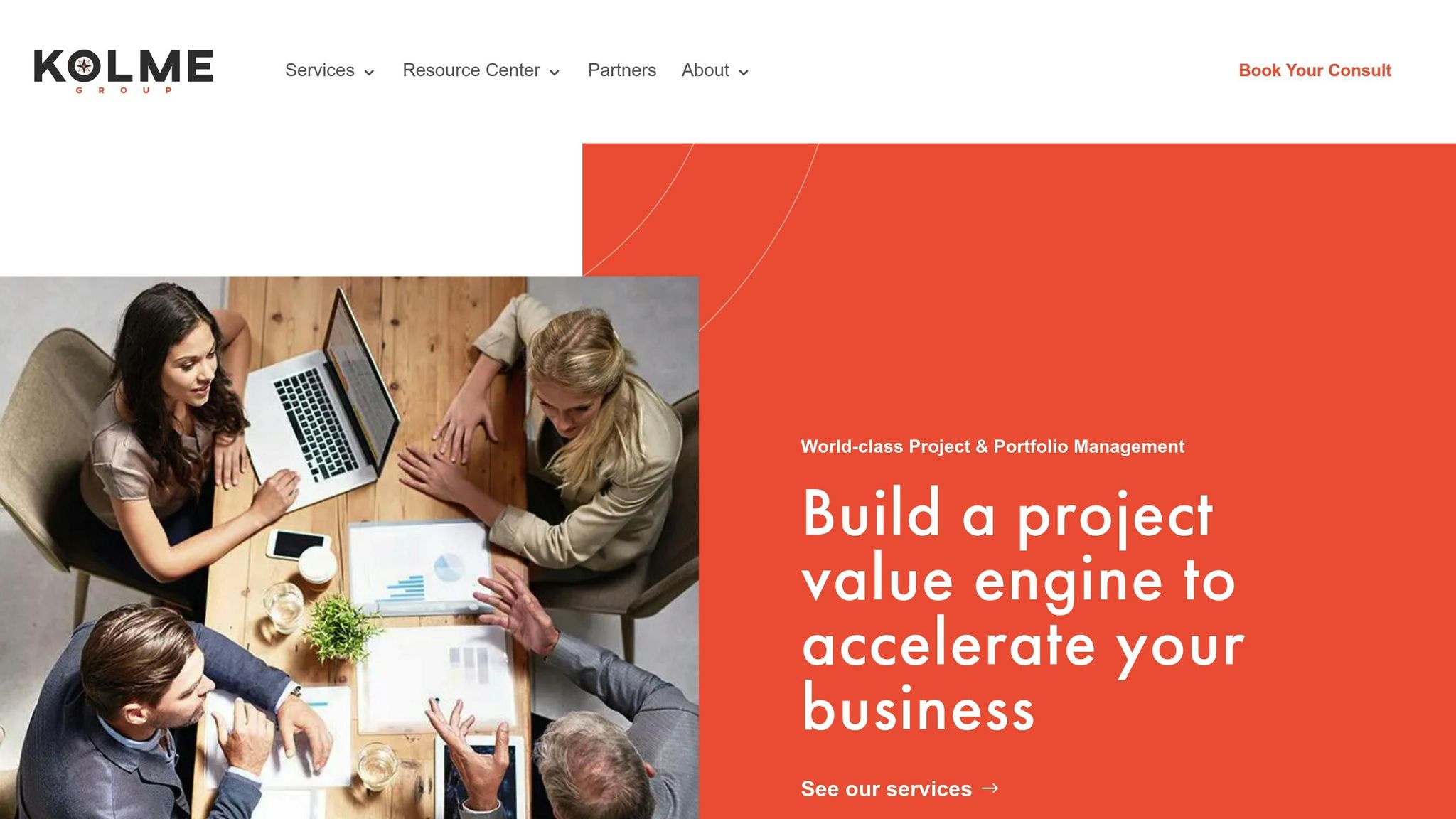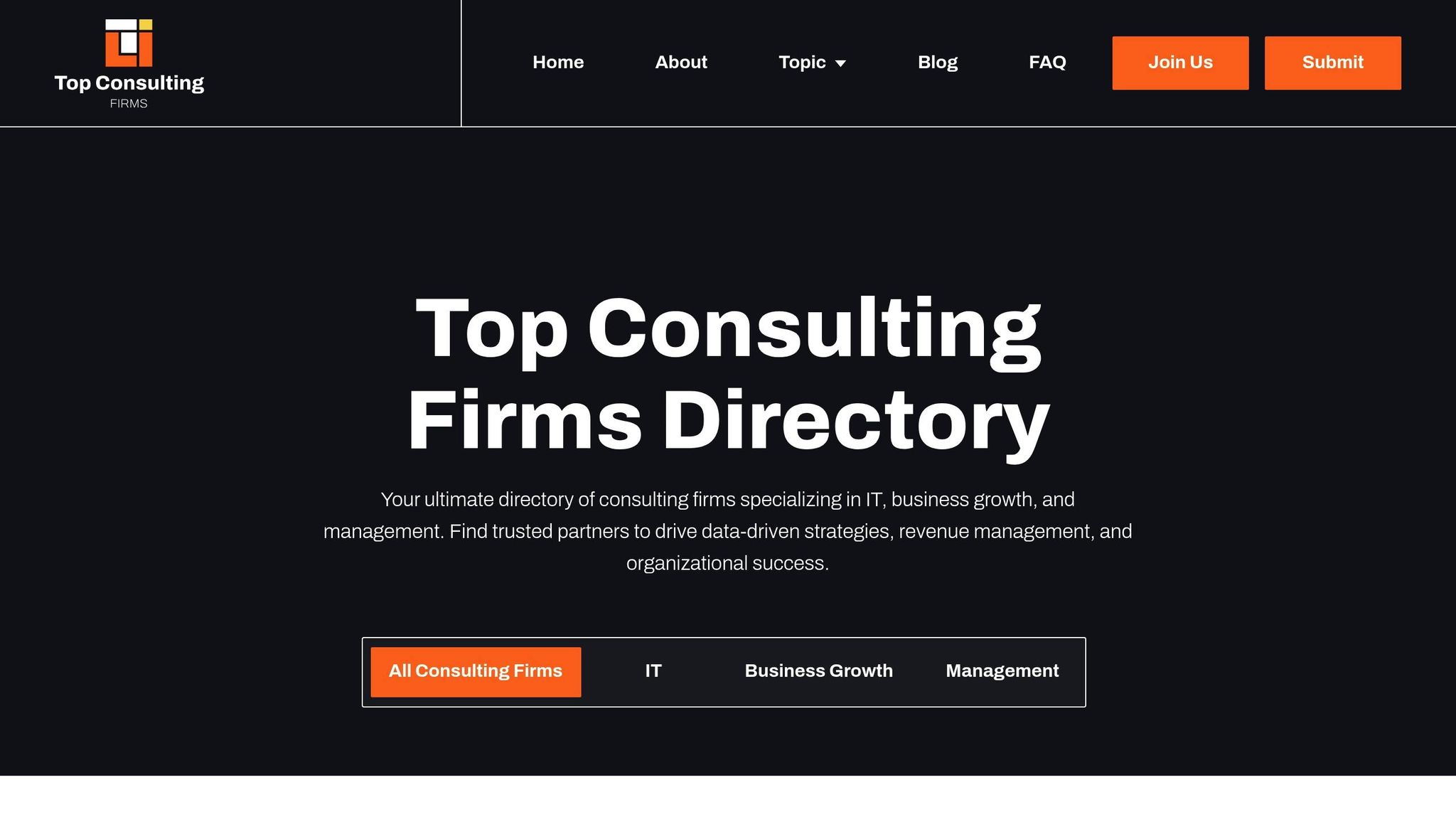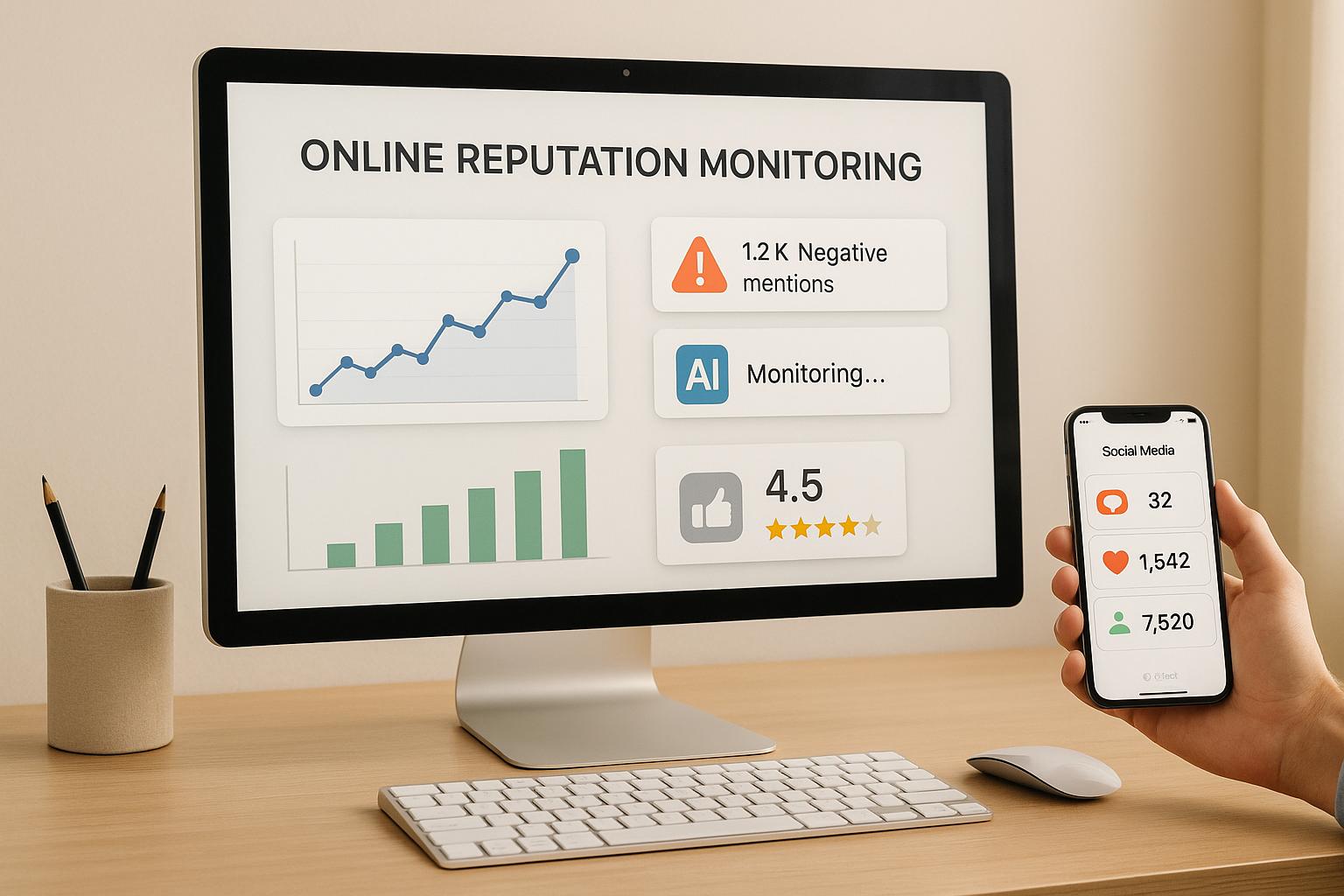Change management training is all about preparing your team to handle transitions effectively. Whether it's adopting new systems, reorganizing teams, or introducing company-wide changes, identifying the right training needs ensures employees are equipped with the knowledge, skills, and mindset to succeed.
Key Steps to Identify Training Needs:
- Understand Knowledge Gaps: Evaluate frameworks like ADKAR or Kotter’s 8-Step Process, organizational workflows, and change psychology.
- Focus on Skills: Pinpoint communication, problem-solving, leadership, and project management abilities.
- Address Behavior Shifts: Encourage flexibility, resilience, and teamwork to ease transitions.
- Assess Using Tools: Use observations, surveys, and skills audits to uncover gaps.
- Tailor Training: Customize solutions for specific roles, from executives to frontline employees.
Why It Matters:
Targeted training reduces resistance, improves adoption rates, and builds confidence during transitions. For complex initiatives, consulting experts can provide unbiased insights and speed up the process.
Pro tip: Regularly reassess training needs to stay ahead of challenges and ensure long-term success.
Unlocking Success: The Power of a Well-Designed Training Plan in Change Management | Kolme Group

Main Areas of Change Management Training Needs
Change management training focuses on three major areas, each targeting a unique aspect of how employees adapt to change. These areas address the knowledge, skills, and mindset shifts required for successful transitions.
Knowledge Requirements
A solid understanding of proven frameworks and methodologies forms the backbone of effective change management. Teams need to know how change unfolds within organizations and what strategies have worked elsewhere.
Key frameworks like ADKAR offer a structured way to manage transitions. This model guides teams through the stages of awareness, desire, knowledge, ability, and reinforcement. Similarly, Kotter's 8-Step Process emphasizes creating urgency, building coalitions, and embedding new practices into the company culture.
An understanding of organizational processes is equally important. Employees need to grasp how decisions are made, identify key stakeholders, and pinpoint areas where resistance might arise. This includes familiarity with the company’s structure and communication channels.
It’s also crucial to understand change psychology. Resistance to change is natural, and recognizing this helps teams plan better responses. By addressing the emotional side of change - not just the technical aspects - teams can anticipate and manage concerns more effectively.
Once the knowledge foundation is in place, the next step is developing the practical skills needed to implement change.
Skills Development
Knowledge sets the stage, but practical skills determine whether change efforts succeed. These abilities equip employees to handle the complexities of change initiatives.
Communication skills are critical. Change management requires ongoing conversations with various groups. Teams need to tailor messages for executives, managers, and front-line employees while actively listening to feedback and concerns.
Problem-solving abilities are essential for overcoming the unexpected hurdles that arise during transitions. Analytical thinking helps identify root causes of resistance, while creative thinking generates solutions suited to different groups.
Leadership skills are vital, even for those without formal leadership titles. Change often involves influencing others without authority, building consensus across diverse teams, and motivating people through uncertain times.
Additionally, project management skills play a big role. Managing timelines, coordinating activities, and tracking progress are all necessary for keeping change initiatives on course.
However, even with the right skills, lasting success depends on fostering the right attitudes and behaviors.
Behavioral and Attitude Changes
The toughest part of change management training often lies in helping people shift their mindsets and adopt new behaviors. Knowledge and skills alone won’t lead to success if employees aren’t mentally ready to embrace change.
Flexibility and adaptability are essential behavioral shifts. Many employees thrive on routine and predictability, but effective change management requires comfort with ambiguity and the ability to adjust strategies as circumstances evolve.
Encouraging a mindset that sees change as an opportunity rather than a threat is key. This transformation takes time and requires consistent reinforcement.
Resilience is another critical trait. Change initiatives rarely go as planned, so employees need the emotional strength to recover from setbacks and maintain their energy. Building resilience involves stress management techniques, supportive networks, and maintaining perspective during challenging periods.
Fostering a growth mindset helps employees view challenges as chances to learn rather than as obstacles. When teams believe they can develop new skills, they’re more likely to engage with training and embrace change. This often means unlearning fixed ideas about personal or organizational limitations.
Finally, collaborative behaviors are crucial. Change management often involves working across departments and hierarchies in ways that may be unfamiliar. Employees need to practice open communication, ask for help when needed, and support colleagues who may be struggling with transitions.
Behavioral changes take time and require ongoing support. Unlike learning a new tool or process, shifting deeply ingrained attitudes and habits demands consistent effort and reinforcement over the long term.
Methods for Assessing Training Needs
To effectively address change management training needs, it's essential to evaluate current capabilities and identify specific gaps that may hinder success. Below are three practical methods to assess and address these training requirements.
Observations and Performance Monitoring
Observing how employees respond to real-world change situations can reveal insights that surveys or interviews might overlook. This method focuses on actual behaviors rather than perceptions.
- Direct observation during change initiatives offers an unfiltered view of how employees communicate, handle resistance, and adapt to new circumstances. Take note of specific instances that showcase both strengths and challenges.
- Performance metrics can signal areas where training is needed. Metrics like project timelines, stakeholder engagement, and employee satisfaction during transitions can highlight gaps. For instance, frequent delays or high resistance might point to issues in communication or project management skills.
- 360-degree feedback involves gathering input from supervisors, peers, and direct reports to uncover blind spots. This approach often highlights discrepancies between how individuals perceive their abilities and how others experience their performance.
Documenting specific examples - such as successfully navigating a tough situation or struggling with a particular challenge - provides concrete evidence to guide training priorities.
Surveys and Feedback Tools
Surveys are a valuable way to gather insights from larger teams, complementing the observations made in the field. They can expose both skill gaps and confidence issues.
- Self-assessment surveys allow employees to evaluate their own abilities. Questions might explore comfort levels with change management tasks, confidence in using specific frameworks, or perceived barriers to success. Consider both technical skills and emotional readiness.
- Stakeholder feedback surveys capture the perspectives of those impacted by change, such as customers, suppliers, or other departments. These external viewpoints can reveal communication or process issues that internal assessments might miss.
- Pre- and post-initiative surveys help track how training needs evolve over time. Conduct initial surveys before changes begin, then follow up during and after implementation to measure progress and identify new needs.
Include open-ended questions or scenarios that require respondents to explain how they would handle specific situations. This approach often uncovers nuanced training needs that simple multiple-choice questions might miss. Anonymous feedback tools can also encourage honesty, especially when addressing sensitive topics, leading to more accurate assessments.
Skills Audits and Gap Analysis
A comprehensive skills audit compares current competencies with those required for successful change management, creating a clear roadmap for training priorities.
- Competency mapping defines the specific skills and knowledge needed for effective change management in your organization. Break down broad capabilities like "communication skills" into measurable components, such as "facilitating tough conversations with resistant stakeholders" or "translating technical changes into business benefits."
- Skills inventories document the current abilities of team members. Use self-assessments, manager evaluations, and objective measures like certifications or past project outcomes. Consistent rating scales ensure meaningful comparisons across the team.
- Gap analysis highlights the differences between current and desired capabilities, helping to prioritize training efforts. Focus on gaps that have the most significant impact on success. For example, a minor gap in a critical skill may require more attention than a larger gap in a less essential area.
Contextualize your findings by benchmarking against industry standards. Research what skills are commonly required in similar roles at other organizations. This comparison can validate your priorities and identify areas where your team might need to excel beyond the norm.
Visual tools like skills matrices or heat maps can make it easier to spot patterns and communicate findings to leadership. These tools can also identify individuals who could mentor colleagues or lead internal training sessions.
Finally, regular reassessment ensures that training programs remain relevant. Conduct formal skills audits annually, with informal check-ins every quarter. This ongoing process allows you to refine training strategies based on what’s working and what needs adjustment.
sbb-itb-97f6a47
Steps to Implement Training Needs Assessment
This section breaks down the practical steps for assessing and addressing training gaps in change management. A well-structured training needs assessment is key to identifying the obstacles standing in the way of successful transformation. The process typically unfolds in three distinct phases, each designed to uncover critical gaps.
Define Objectives and Engage Stakeholders
A strong foundation for any training needs assessment starts with clear objectives and the involvement of the right stakeholders. This initial phase determines whether the assessment will yield actionable results or fall short of expectations.
Setting Clear Goals
Define specific outcomes tied to the behaviors needed for successful change. For example, focus on skills like effective communication, consistent follow-up, or the ability to translate technical changes into business advantages. Also, identify what will sustain these behaviors over time, such as building confidence in new processes or managing challenging conversations.
Identifying Key Stakeholders
Create a detailed map of all relevant stakeholders - this includes clients, suppliers, and regulators. Assess their influence, decision-making power, and readiness to embrace change. A thorough stakeholder analysis helps reduce resistance, boosts engagement, and fosters a sense of ownership across the organization.
Once objectives are set and stakeholders are on board, the next step is to gather the data needed to pinpoint gaps in current capabilities.
Collect and Analyze Data
With objectives in place and stakeholders engaged, the focus shifts to collecting and analyzing data. This phase is about turning raw information into clear training priorities by drawing from multiple sources.
Gathering Data Strategically
Use tools like observations, surveys, and skills audits to collect both baseline and follow-up data. Schedule these activities to minimize disruptions while capturing insights in realistic settings. For example, observe team dynamics during actual change meetings rather than isolated training sessions.
Timing is everything. Start by gathering baseline data before launching change initiatives, then collect follow-up data during implementation. This approach helps track how training needs evolve as challenges arise and new skills are developed.
Extracting Actionable Insights
Look for recurring gaps across different data collection methods, as these often highlight the most pressing training needs. Comparing self-assessments with external observations can reveal discrepancies between perceived and actual performance.
Visual tools like skills matrices or heat maps can make your findings easier to communicate to leadership. These visuals also guide training providers in addressing the most critical areas.
Once you’ve identified the gaps, it’s time to move on to selecting and implementing solutions tailored to these needs.
Select and Implement Training Solutions
The final phase focuses on turning assessment findings into targeted training programs that address specific gaps while fostering long-term change readiness.
Tailoring Training to Your Audience
Choose training solutions that align with the unique needs of each group. Executives may benefit from sessions on vision setting and resilience, while middle managers might need practical guides for leading teams through change. Change practitioners often require structured frameworks and hands-on tools for immediate use.
"Leaders today are not just managing projects but leading human transitions - building trust, emotional resilience, and adaptability as much as process discipline." – Harvard Business Review
Look for training programs that combine theoretical knowledge with practical exercises like role-playing and interactive activities.
Planning for Effective Implementation
Consider your workforce’s locations, schedules, and learning preferences when deciding on delivery methods. Incorporate scenarios and case studies that resonate with your industry, whether it’s healthcare, technology, finance, or government.
Ensure scalability from the beginning. Opt for programs that can start small with pilot teams and expand organization-wide, offering ongoing support through coaching, toolkits, or communities of practice. Research shows that companies investing in capability building during transformation are 2.5 times more likely to succeed.
Select facilitators with real-world change management experience to ensure the training feels relevant. Prioritize programs aligned with recognized credentials like ACMP's CCMP, PMI PDUs, or Prosci frameworks, which add professional credibility and support continued learning.
"The future belongs to organizations that are equipping people, regardless of role or responsibility, to lead and respond to change better and faster." – Yvonne Ruke Akpoveta, Change Management Strategist, Catalyst and Change Leadership Advocate
With 85% of employers planning to upskill their workforce by 2030 but only 10% of HR and L&D professionals feeling their employees are ready for the next 12 to 24 months, a well-executed training needs assessment is more than just preparation - it’s a competitive edge for navigating the future.
Using Consulting Expertise for Training Needs Assessment
While internal teams can perform basic training needs assessments, bringing in external consultants can provide a more comprehensive perspective on change management requirements. External experts leverage proven methods and industry benchmarks to deliver objective insights that internal teams might miss.
How Consulting Firms Add Value
External consultants bring several key benefits to the table when assessing training needs for change management. First, they offer an unbiased perspective, free from internal politics or preconceived notions. Employees are often more open and candid with outside experts, leading to more accurate identification of skill gaps and performance challenges.
These firms also draw on their experience working with a variety of clients, allowing them to spot trends and benchmark your organization against industry standards. Their tried-and-tested frameworks for gathering, analyzing, and reporting data ensure a thorough and efficient assessment process.
Another advantage is speed. While internal teams often juggle multiple priorities, consultants dedicate their full attention to your training needs assessment. This focus enables them to complete evaluations in a matter of weeks, identifying critical data sources and sidestepping common delays. Additionally, consultants bring fresh ideas from their work across different industries, tailoring innovative solutions to fit your organization’s specific needs.
If you're looking to connect with these experts, the Top Consulting Firms Directory is a valuable resource.
Using the Top Consulting Firms Directory

The Top Consulting Firms Directory is a curated platform designed to help businesses find leading consulting experts in areas like organizational transformation, strategic management, and change leadership.
The directory’s filtering tools make it easy to narrow down firms based on industry, size, location, and services offered. This ensures you can identify consultants who understand your organization’s specific challenges and needs.
Client reviews within the directory provide firsthand insights into each firm’s performance. These reviews highlight real experiences from other businesses, covering aspects like project outcomes, communication quality, and overall effectiveness. Such testimonials can be invaluable when evaluating potential partners.
The directory also allows for side-by-side comparisons of consulting firms. This feature lets you review their expertise, case studies, and service approaches, helping you make an informed decision that aligns with your training assessment requirements.
Additionally, the platform includes details on industry specialization, helping you find consultants with deep knowledge of your sector. Whether your organization operates in healthcare, technology, manufacturing, or finance, you can connect with firms that understand the specific challenges and regulations of your field.
Many firms listed in the directory showcase case studies of successful change management projects. These examples highlight their ability to identify training gaps and implement effective solutions. By reviewing these case studies, you can reduce the risk of partnering with a firm that lacks the relevant experience for your needs.
Conclusion and Key Takeaways
Effective change management training begins with a solid training needs assessment. This foundational step ensures smoother transitions and better results, setting the stage for successful change initiatives. By combining proven strategies with expert insights, organizations can navigate change with confidence.
Summary of Steps and Methods
To conduct a thorough assessment, use a mix of observation, surveys, and skills audits. Research shows that regular, data-driven evaluations can improve performance by 24%. A structured three-step process - defining objectives with stakeholder input, collecting and analyzing data, and selecting the right training solutions - provides a clear and actionable framework.
Take Kaiser Permanente's 2022 digital transformation as an example. They used employee surveys, skills audits, and focus groups to pinpoint gaps in digital literacy and readiness for change. The results? A 15% boost in project adoption rates and a 20% drop in resistance to change within just six months. This kind of success demonstrates the power of a well-executed assessment.
Additionally, the LinkedIn 2023 Workplace Learning Report highlights that 89% of learning and development professionals view identifying and addressing skills gaps as critical for navigating change. This statistic underscores why a structured approach is not just helpful - it’s essential.
Final Thoughts on Using Expert Help
When tackling complex change initiatives, outside expertise can make a world of difference. For example, Procter & Gamble partnered with a consulting firm during their 2023 global restructuring. The consultants conducted job mapping, analyzed performance metrics, and held stakeholder interviews to design a custom training program. This collaboration led to measurable improvements, as reported by Consulting Magazine in 2023. Such examples highlight the value of ongoing evaluation and expert involvement in sustaining change.
External consultants offer objectivity and bring tested methodologies to the table. They can often complete assessments more quickly by focusing exclusively on change management priorities. For organizations undergoing large-scale transformations or lacking internal expertise, professional guidance can mean the difference between impactful training and wasted effort.
If you’re looking for the right expertise, the Top Consulting Firms Directory is a great starting point. With features like filters, client reviews, and detailed firm profiles, it’s easier to find consultants who understand your industry and have a proven track record in change management training.
Finally, remember that ongoing assessment is key to staying ahead of evolving challenges. Regularly reviewing performance data and engaging external experts when needed ensures your training programs remain effective. This proactive approach turns training into a strategic asset, driving the success of your change management efforts.
FAQs
How can I identify the training needs for change management in my organization?
To figure out what kind of change management training your team needs, start by collecting feedback directly from employees. You can do this through surveys, interviews, or even focus groups. These methods help pinpoint skill gaps and gauge how prepared your team is to handle change. Watching how people work and using performance reviews can also reveal areas where improvement is needed.
A helpful tool in this process is a training needs assessment matrix. This allows you to compare the skills and competencies your team needs with what they currently have. It's also important to take a closer look at the roles and tasks that will be affected by the change. This ensures the training not only aligns with your organization's goals but also equips employees to handle their new responsibilities. By tailoring the training to meet your organization’s specific needs, you’ll create a more focused and effective program.
How can external consultants help identify and address change management training needs?
External consultants offer a new viewpoint and specialized knowledge when it comes to identifying and addressing training needs for change management. They take an unbiased look at your organization’s current processes, collect relevant data, and analyze any gaps in training. This approach helps pinpoint the exact skills employees need to adapt and thrive during periods of change.
With their expertise, consultants can create customized training programs and strategies that align with your organization’s unique goals. Their objective perspective ensures solutions are effective, ultimately boosting the success rate of your change initiatives.
Why is it important to reassess change management training needs regularly, and how can organizations do this effectively?
Regularly evaluating change management training needs is crucial for ensuring employees are equipped to handle shifting organizational goals and challenges. As businesses evolve, training must keep pace to address emerging skill gaps, enhance performance, and ease transitions during periods of change.
To make this happen, organizations should conduct regular assessments of training needs that align with their broader objectives. This process includes gathering employee feedback, analyzing performance metrics, and preparing for anticipated changes. Taking these steps helps businesses stay flexible, minimize resistance to change, and develop a workforce that's better prepared for future demands.


